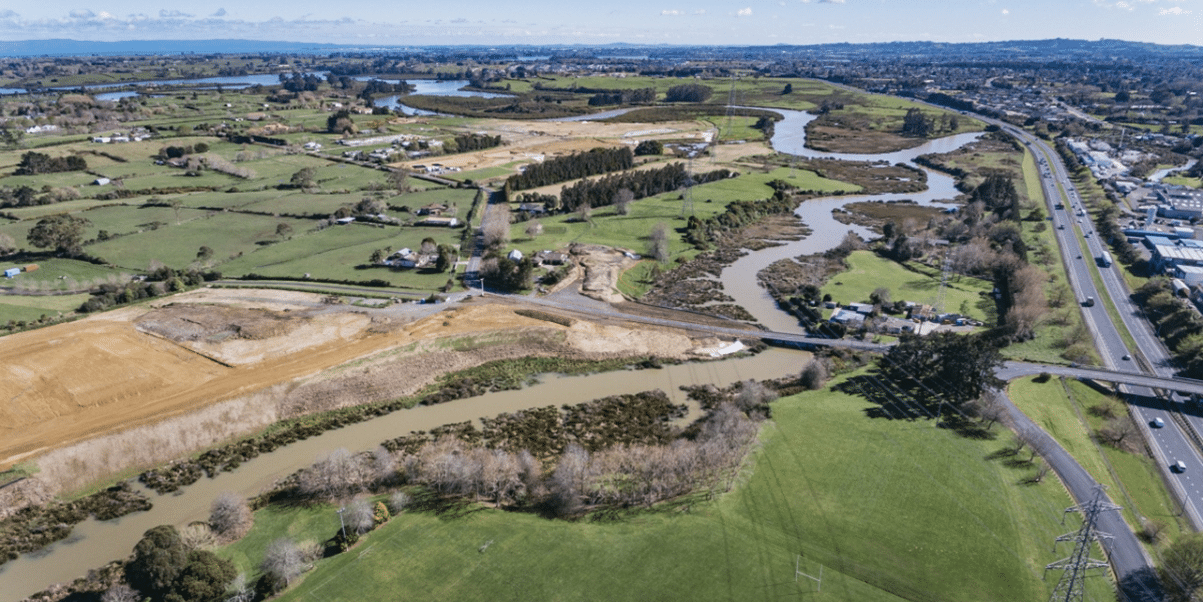Jaine Lovell-Gadd, Centre Development Manager at Kāinga Ora and Property Council Auckland Region Committee member shares her views on economic master planning.
What is Economic Master Planning?
Traditional master planning methodologies provide a physical / spatial plan to define land use arrangements and densities. The economic master planning process builds from this, it emphasises the multi-dimensional and people centric perspectives and makes the planning even richer.
The basis is that an integrated economic-spatial planning process can assist in achieving a complex set of outcomes that a region aspires. Some of the key foundational outcomes include;
- Create high value jobs in the sectors and industries through deliberate activation and intervention,
- Unburden future transport needs and adhere to climatic goals through reduced footprint,
- Make individual plans of participating entities more complementary with better channelling of resources,
- Make it relevant and contextual at regional level,
- Make it participatory by creating a governance group, and
- Incorporate social equity and climate lens as part of planning process for sectors and industry.
How is Economic Master Planning done?
It starts at macro level using economic, social and climate lens to match the aspirations of the area and create a multiyear plan for an identified area / region, with an intent that the community can work, live, play and thrive in the vicinity.
As part of the process, it identifies the key development plans of private sector and various programs of public sector on an integrated timeline canvas to define the realistic outcomes possible and potential gaps in planning in the short, medium and long term. The process scans through layers of information, trends and planning documents.
The economic master planning process creates a multi-stakeholder governance group with Iwi, public, private and community participants for oversight, transparency and information dissemination. This helps in weaving the aspirations of different groups into the process.
It guides angles around activation, which can include business attraction and the policy changes required to achieve the benefits.
The economic masterplan provides advice on deliberate tactical interventions and catalytic moves by participating entities to achieve the wider outcomes and develop in a complementary format.
The economic masterplan creates a planning base for future economic growth-oriented funding and financing opportunities.
It is an alignment of economic and spatial planning that is focused on jobs, recreational activities, social equity, climate, and housing. It brings all the participants together.
Where and Why Economic Master Planning in Auckland
Where…
The Southern Auckland Economic Masterplan built from the Drury-Ōpaheke structure plan. Drury-Ōpaheke has been identified as an area for significant future opportunity and growth, with a new urban development (equivalent to the size of Napier) planned over the next 30 years.
The Southern Corridor is defined as covering the Drury-Ōpaheke structure plan area and its fringes to capture the wider eco-system. It is strategically located, sitting between Manukau Harbour to the west, Ardmore and Hunua to the east, Bombay, and Pukekohe to the south and Papakura to the north.
The area falls within the ‘Golden Triangle’ of Auckland, Hamilton, and Tauranga, which are all linked by state highway networks. The area’s future growth and development represent an exciting proposition for Auckland and the ‘Golden Triangle’ more broadly. Over the next 30 years, based on the Drury-Ōpaheke structure plan, it is anticipated there will be:
- 3 new train stations, electrification of railway lines, significant upgrades to State Highway 1,
- Large scale retail and industrial developments, and
- 22,000 new homes, 60,000 new residents, and 12,000 new jobs.
The land is close to the airport, inter-regional roads, labour, and resource markets. It also has potential to add to established business areas such as those in Papakura and Franklin, providing growth opportunities for the wider sub-region.
Why…
Over the next 30 years, development in this area represents a significant opportunity for Auckland’s economy. It will be the largest development of its kind in New Zealand and will provide an opportunity to align southern Auckland’s economic and spatial planning to ensure better outcomes for future generations. This is a ‘one time opportunity’ that cannot be missed.
Economic master planning lends itself to the early-stage planning and hence is well suited to greenfield locations. It presents a possible economic and urban future for the focus area in Southern Auckland. It will be used in engagement with the Iwi, community, public sector, and private investors to support future economic, infrastructure, and urban development planning, to promote positive economic, environmental, and social outcomes in an integrated and transparent format.
Tātaki Auckland Unlimited (TAU), Auckland’s economic and cultural agency was the lead agency that promoted this thinking and the “glue in the process”. In 2021 Arup was briefed and engaged by TAU to build on earlier economic analysis work done for Drury by Martin Jenkins.
The industries identified as providing the most opportunity for Southern Auckland were 1. Health (education and training, producer, secondary healthcare) 2. Construction Materials (building material production, development, and construction) 3. Food and Beverage (food processing, packaging), and 4. Wool and Textiles (fibre and fabric production)
This Southern Auckland Economic Masterplan will be used for the business attraction step, involving market engagement with possible private, public sector and iwi investors, within New Zealand and globally. Next steps for TAU and the steering group will be to contribute to implementing projects. Also, to focus on identifying and ring-fencing land for job interventions and activation with private landowners and public sector partners and working alongside funders.
Future stages of this work will address methods of implementation, action owners, funding sources, capital attraction and of course reporting.
It is also intended this replicable model will help Auckland, specifically, and New Zealand more generally, by creating a template, to be used to unlock and regenerate other areas for future generations. Watch this space…
In conclusion
The first of its kind in New Zealand, this Southern Auckland Economic Masterplan is a vision for the development planned for the area and illustrates the value in integrated participatory planning.
Consultative economic master planning, such as this, ensures a better platform for the iwi, public and private sector to align on common goals and undertake complementary activities to reduce duplication of resources.
Development of the Southern Auckland Economic Masterplan is testament to the power of partnership and offers creative ways of addressing current challenges.
Jaine Lovell-Gadd
Centre Development Manager, Kāinga Ora
My professional working life combines central and local government experience. I have had the pleasure of planning and building community and commercial precincts and contributing to transforming these spaces for people to live, work and play in. I have enjoyed capturing the requirements of the local community and the businesses to enable this to happen. A Stadium, a Marine precinct, a Museum, City Centre Tidal steps, a Health Centre and Town Centre Civic and Public spaces, creating activation and commerce have been a privilege. My Professional qualification is a BCom and Business Diploma (Marketing) from Auckland University. I am a cycling adventurer around the world.


